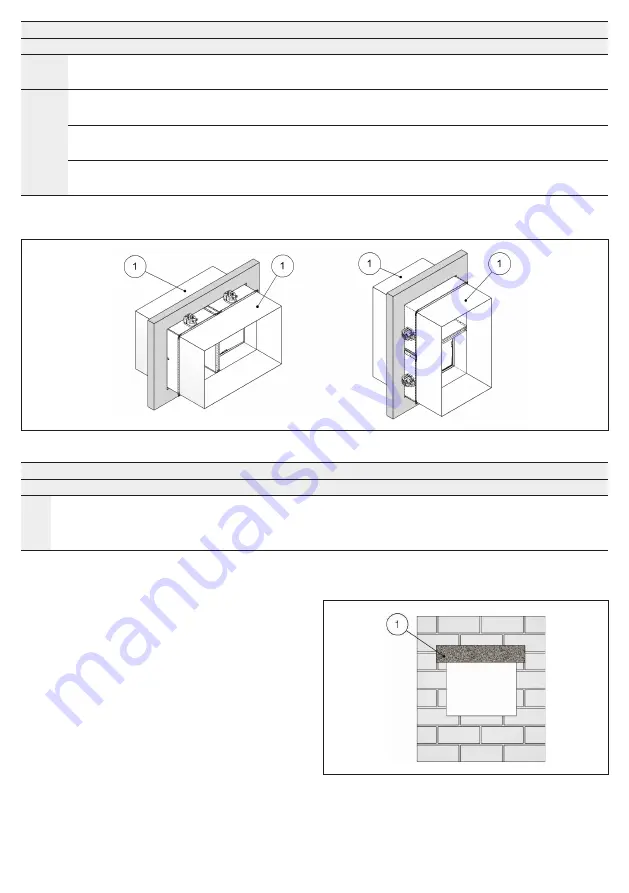
10
/15
Fire dampers installed within vertical wall
Fire dampers installed within floor
Installation
a [mm]
b [mm]
c [mm]
d [mm]
Paired installation
Rig
id
w
all
EI 120 S Installation within vertical
rigid wall
Plasterboard sealing
44
22
-
-
Yes. One air duct
Flexible w
all
EI 120 S Installation within vertical light
wall (plasterboard)
Plasterboard sealing
44
22
-
-
Yes. One air duct
EI 120 S Installation within vertical light
wall (gypsum blocks wall)
Plasterboard sealing
44
22
-
-
Yes. One air duct
EI 90 S Installation within vertical light
wall (gypsum blocks wall)
Plasterboard sealing
200
75
-
-
No
The minimum distance between two or more paired installations is
200 mm.
It is forbidden to pair three or more fire dampers.
1. One air duct
Installations within vertical light wall (Shaft wall)
Fire dampers installed within vertical wall
Fire dampers installed within floor
Installation
a [mm]
b [mm]
c [mm]
d [mm]
Fle
xible w
all
EI 60 S Installation within vertical light wall (Shaft wall)
Plasterboard and mortar or plaster putty sealing
200
75
-
-
Construction supports characteristics
The European standard for fire dampers foresees a precise correlation
between the wall/floor characteristics and the fire resistance class
obtained, as well as the correlation between wall/floor used for the
test and wall/floor used for the actual installation.
The test results obtained on a type of wall/floor are valid also for
walls/floor of the same type but with greater thickness and/or densi-
ty than those used in the test.
For plasterboard walls, the test results are also valid for walls with a
greater number of plasterboard layers on each side.
As a result, the indicated thickness and density characteristics are to
be considered as minimum values.
The wall/floor in which the fire dampers are installed must be fire
class certified according to the standards foreseen for the structure.
Rigid walls
Can be made with aerated concrete blocks, poured concrete, con-
crete panels, perforated cell elements in concrete or brick in accord-
ance with the following characteristics:
• minimum thickness 100 mm;
• minimum density 550 kg/m³.
The use of a reinforcing beam above the opening is recommended
for walls made from concrete blocks, bricks or in concrete cell ele-
ments.
For walls built with perforated elements, it is also recommended that
the area of the opening be made from full elements (for example
aerated concrete blocks) to guarantee the correct adhesion of the
mortar.
1. Reinforcing beam
Light plasterboard vertical walls
During testing, light plasterboard walls have been used with the fol-
lowing characteristics:
• U-shaped horizontal metal frame (50 mm) and C-shaped vertical
frame (49 mm) made from 0,6 mm thick sheet metal;
















